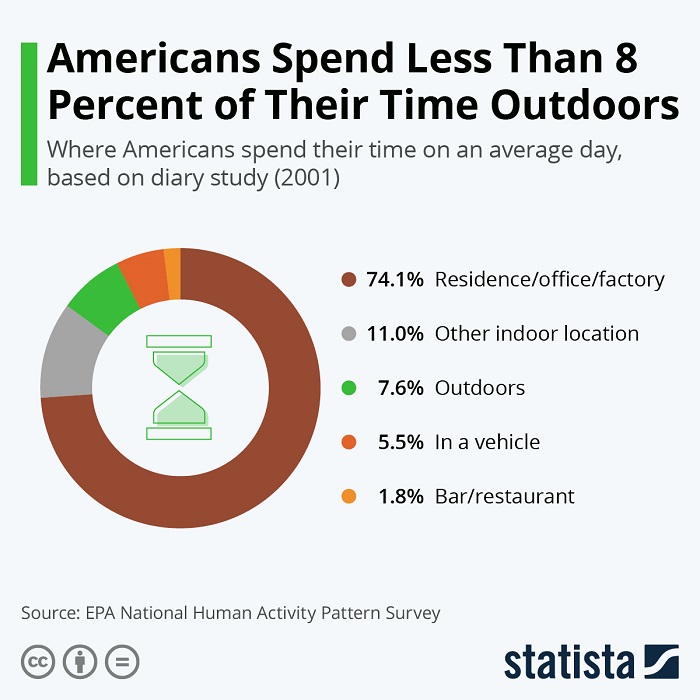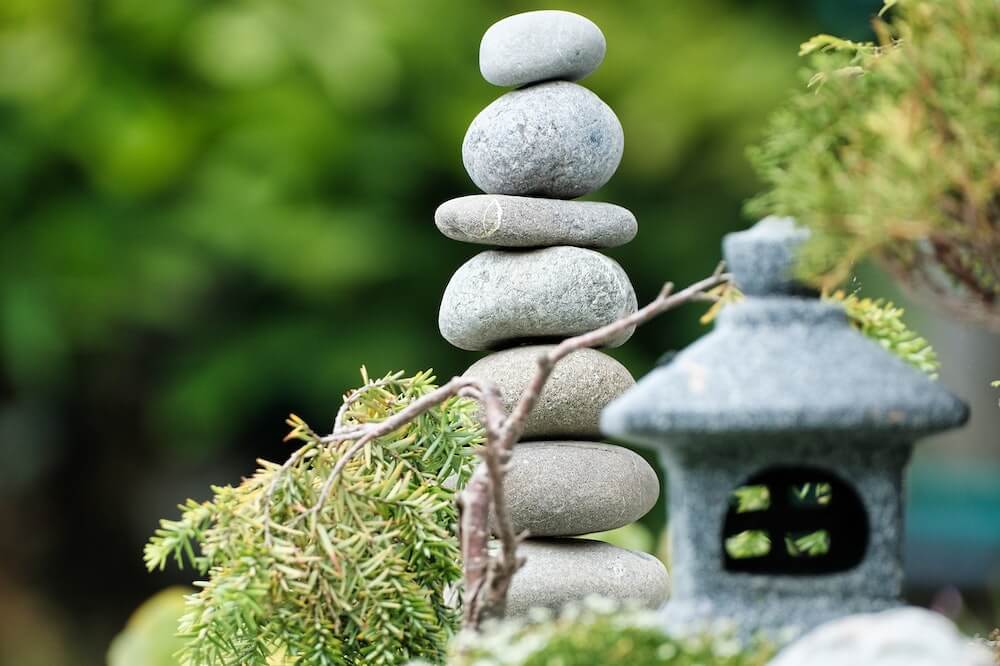
“Look deep into nature, and then you will understand everything better.”
Albert Einstein
Forest bathing might sound like hipster code for “hugging trees,” but really, it’s your brain waving a white flag and begging for a reboot.
If you’re fried, screen-stuck, and only see nature as that default wallpaper you’ve never changed, shinrin-yoku is your way out.
It means “forest bathing”—not dunking yourself in a creek, but soaking up the woods with every sense you’ve got.
It literally means “forest bathing”—not cannonballing into a stream, but soaking up the woods with every sense you’ve got.
Picture this: a burned-out salaryman in Tokyo, scrolling TikTok at 1 a.m., eyes gritty from zero sleep. The next morning, he steps into a forest—no phone, no earbuds.
Within minutes, his shoulders drop. His breath slows. And for the first time in weeks, the noise in his head finally stops.
Here’s why: he’s inhaling phytoncides (those woodsy essential oils trees emit to fight bugs), which also happen to lower cortisol and supercharge his immune system.
This isn’t woo-woo wellness fluff. Studies show that forest immersion slashes stress hormones, reduces blood pressure, and flips on your parasympathetic nervous system—the “chill out” switch.
Mood tests like POMS (Profile of Mood States) confirm it: anxiety, depression, and fatigue plummet, while energy and clarity spike.
Translation: your nervous system’s been stuck in survival mode. The forest is your off-ramp.
Back in the 1980s, Japan made shinrin-yoku an official public health prescription. Overworked employees were literally told, “Go into the woods or burn out.”
Fast forward: today’s world is louder, faster, and about as natural as a plastic houseplant. Studies show we spend 93% of our lives indoors. No wonder stress, anxiety, and chronic fatigue are practically default settings.

The forest doesn’t hand out self-help mantras—it just soothes your senses in the best way possible. First, it’s the dappled sunlight strobing through the canopy, then the quiet hum of insects you forgot existed, and that hit of cedar-scented air sharp enough to make you wonder why Febreze even bothers.
And before you’ve done anything remotely “mindful,” your body’s already rewiring itself. Heart rate slows. HRV improves. That low-grade anxiety you’ve been treating like background music?
It fades, almost annoyingly easily, like your body’s been waiting for this reboot the whole time—you just had to step outside and let it happen.
And you don’t need a remote rainforest to feel it. Urban research in Tokyo found that even strolling through city parks significantly reduced mental fatigue and boosted mood.
The secret isn’t where you go; it’s how you go—slowly, with intention, and with no phone glued to your face.
Here’s the biology: humans evolved outside. As one Vogue retrospective put it : we as humans have spent 99% of our existence immersed in nature. Then we swapped trees for cubicles, and our nervous system never got the memo.
Biologist Edward O. Wilson called it the biophilia effect: our innate pull toward nature. Walk into the woods, and your body reacts instantly. Your shoulders loosen, your jaw unclenches, and for once, that email from Karen stops haunting you.

Dr. Lisa Nisbet , a psychologist who studies nature’s impact, puts it bluntly:
“There is mounting evidence, from dozens and dozens of researchers, that nature has benefits for both physical and psychological human wellbeing. You can boost your mood just by walking in nature, even in an urban area.”
Translation: You don’t need the Swiss Alps. You just need green.
In Seoul, Ji-woo, a 34-year-old office worker, hit peak burnout—panic attacks, insomnia, the works. Instead of upping her meds, her doctor handed her something unexpected: an “eco-therapy” prescription.
Twice a week, she swapped fluorescent-lit cubicles for pine forests. No screens, just trees. Within a month, her cortisol levels dropped, her sleep stabilized, and her anxiety meds were cut in half.
She’s not an anomaly. In Finland, kids grow up “nature-literate,” trekking forest trails built next to schools to counter rising ADHD rates.
And in Scotland, NHS doctors literally hand out “green prescriptions”—orders to go outdoors—because research shows it works as well as low-grade antidepressants.
This isn’t folk wisdom. It’s medicine—rooted in biology, not fairy dust.
Forest bathing doesn’t just feel good—it rewires you at a biological level.
Ever notice that intoxicating “forest smell”? Those are phytoncides. Breathe them in, and your NK (natural killer) cell activity —your body’s frontline defense— will skyrocket.

In one landmark study, Professor Qing Li , the president of the Japanese Society of Forest Therapy, saw NK cell activity jump 50% after a single weekend in the woods and stay high for a month. His verdict:
“Spending time among trees offers a panacea for a range of modern ills, including stress, depression, and anxiety, as well as the power to boost the immune system, decrease anger, and even help you sleep better.”
As Henry David Thoreau said, “I took a walk in the woods and came out taller than the trees.” Turns out, the man wasn’t being poetic—he was probably describing an NK cell spike.
Cortisol is the little gremlin that keeps you wired, twitchy, and reaching for your fourth cup of coffee like it’s a life raft. Step into a forest, though, and that gremlin shuts up.
Your cortisol tanks. Blood pressure slides down. Your parasympathetic “chill mode” finally clocks in for work.
And here’s the kicker: you don’t even need to hike. Just find a bench under the trees and sit there. Science says even doing nothing—literally nothing—outdoors dials your nervous system back from “fight or flight” to “hey, maybe life’s okay.”
No gym. No gear. No mindfulness podcast hosted by a guy named Chad. Just you, trees, and a body finally remembering what calm feels like. It’s cheaper than therapy and takes less time than a Netflix episode.

Anxiety and depression? Forest bathing chews them up and spits them out. Multiple studies have shown nature immersion acts like a natural antidepressant, reducing rumination and quieting the brain’s overactive “worry circuits.”
Japanese MRI studies show reduced prefrontal activity—the part that loops stress like bad elevator music—after forest exposure. Translation: your mind stops looping anxious thoughts. Anxiety and depression scores drop—even after single visits.
Walking in the forest is basically a two-for-one deal: light exercise and air that doesn’t taste like car exhaust. Forest air is packed with negative ions—nature’s version of a detox—helping your lungs clear out gunk while lowering your cardiovascular risk.
Even a lazy stroll does wonders. You’re not training for a marathon; you’re just undoing the damage from all those hours slumped over your laptop like a question mark.
Forget dropping $9.99 a month for a meditation app where some guy named Trevor whispers, “Find your inner meadow.” Forest bathing is mindfulness without the Wi-Fi.
Out here, mindfulness happens by accident. The snap of a twig underfoot. The wind threading through branches. A sunbeam warming your face as it filters through the canopy. You’re not “trying to be present”—you just are.
Every sound, scent, and flicker of light drags you out of your spiraling thoughts and anchors you in the now. No guided scripts. No timers. Just the raw, unfiltered present moment—served up by nature, free of charge.
It’s mindfulness, minus the pressure to “do it right.”

Ever notice your best ideas hit you in the shower, not at your desk? Nature works the same way—only better. In one University of Kansas study, people scored “50 percent better on a creativity test after being in nature for four days, disconnected from electronic devices.”
Swap screen glare for greenery, and your brain’s “default network” lights up—the part responsible for imagination and insight.
So, stuck on a problem? Don’t grind harder. Go let the trees do the thinking for you.
Here’s the beauty: forest bathing isn’t complicated. No special gear. No chanting monks. No $90 “forest-scented” candle from a wellness influencer.
You just go outside and stop acting like you’re late for a meeting. Here’s your script:

Urbanite? No problem. Balconies with plants, rooftop gardens, and riverside trails—all count. Studies show even 20 minutes in urban green reduces stress markers.
You don’t need a tent, hiking boots, or a spirit animal. You just need to show up and let the forest do the work.
This isn’t some hipster trend out of Tokyo—it’s gone global:
Different countries, same result: less stress, clearer heads, healthier humans. Turns out this isn’t wellness fluff—it’s biology reclaiming its turf.
Want to deepen the effect? Pair forest bathing with simple practices:

Forest bathing and yoga are the ultimate power couple. Stretch under a canopy of trees, and it’s like your brain hits “factory reset.” Want the deluxe version? Book a yoga retreat in the woods— it’s basically handing your nervous system a vacation notice.
You’re not “biohacking.” You’re layering natural resets over each other until your nervous system finally remembers what peace feels like.
Forest bathing won’t erase bills, fix your inbox, or stop Karen from replying all. But you’ll come back clearer, lighter, and far less likely to throw your laptop out the window.
Every trip is a reset button. A reminder that your brain isn’t broken—it’s just been suffocating in stale office air and blue light. One hour with the trees and suddenly you remember: “Oh yeah! This is what normal feels like!”
So here’s your challenge: Leave your phone in your bag, cancel the artisanal latte, and go spend a couple of hours in a forest—or at least the greenest park you can find.
Call it forest bathing if you like. Or just call it what it really is: hitting pause before modern life chews you up. Because at the end of the day, it’s not a wellness hack. It’s nature, standing there patiently saying, “Welcome back, my friend. Where have you been?”
And if you listen closely, you’ll realize it’s not just the forest talking—it’s the part of you that’s been waiting to breathe again.
So, get out there, embrace the magic, and let nature work its wonders on your mind and well-being. Your mind, body, and spirit will thank you for this transformational journey.
DISCLOSURE: In my article, I’ve mentioned a few products and services, all in a valiant attempt to turbocharge your life. Some of them are affiliate links. This is basically my not-so-secret way of saying, “Hey, be a superhero and click on these links.” When you joyfully tap and spend, I’ll be showered with some shiny coins, and the best part? It won’t cost you an extra dime, not even a single chocolate chip. Your kind support through these affiliate escapades ensures I can keep publishing these useful (and did I mention free?) articles for you in the future.
READ NEXT